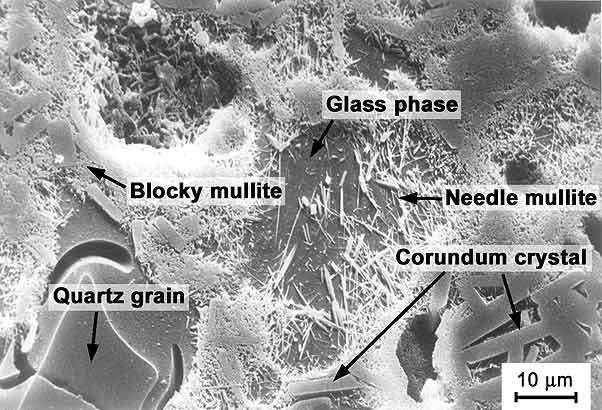3.4.1 Silicate
Ceramics
3.4.1.1 Technical Porcelain
Technical porcelains are understood to be
materials in the "alkaline alumina silicate porcelain"
(C 100) group, which find diverse applications in electronics.
As electricity began to be used in the home
and industry, many types of porcelain were already available,
offering excellent properties such as
- high mechanical strength,
- excellent electrical insulation properties and
- outstanding resistance to chemical attack.
As energy consumption rapidly increased
so did the needs of electrical technology, and the properties
of porcelain were continually developed and improved. This
led to today’s alumina porcelain, which
exhibited noticeably greater strength and reliability even
under extreme thermal stress (for example, -50 °C to 550
°C) or sudden temperature changes (during a short circuit
for example), and was clearly superior to quartz porcelain.
Even the long-term behaviour under open air conditions (ageing)
of alumina porcelain is superior to that of quartz porcelain,
and it is therefore used primarily in open air switching stations
and for open-wire insulators (e.g., high tension or train
insulators and supports) by quality-conscious users.
More recent developments indicate that hydrophobic surfaces
improve the electrical properties of the outer layer, and
permit simplified structural forms. The replacement of alumina
with bauxite is a further innovation. This new and significantly
more economical material offers comparable technical properties.


Figure 3: Microstructure
of an alumina porcelain, ground and etched, under a scanning
electron microscope
The difference between quartz porcelain
and alumina porcelain lies in the exchangeable raw material,
i.e. the more economical quartz (SiO2) and the relatively
expensive alumina (Al2O3). For this reason, and because of
the lower production costs, traditional quartz porcelain
represents an economic alternative for moderate load applications.
For a significant number of applications, this is thus a factor
in quartz porcelain retaining market share and improving competitiveness.
|
|

